Last updated: Jan 2013
Table of Contents
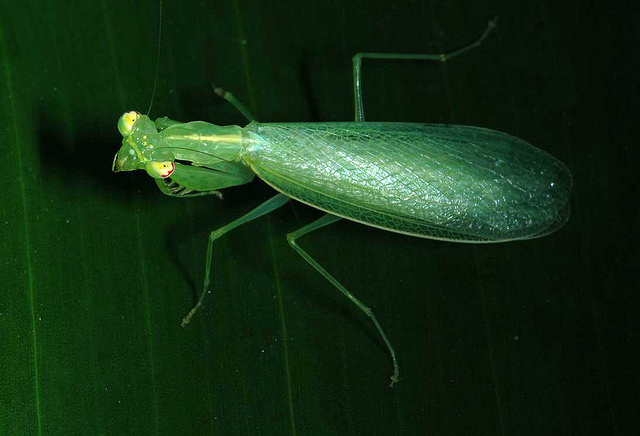
Figure 1. Adult (imago) of Tropidomantis tenera. (Photo: Dr Arthur Anker)

Figure 2. Nymph of Tropidomantis tenera. (Photo: Piotr Hołoweńko)
Introduction
| Mantids (Mantodea) or mantis (can be used interchangeably) are mostly famous for their cannibalistic behaviour on the males after mating. However, how true is it that females will eat their male partners after receiving his sperm? The answer - is not always true. They easily recognised by their rather flattened body appearance, ranging from small to large size. Their antennae are long and slender and have a pair of conspicuous cerci at their abdominal end. The adults (imagos) have 2 pairs of wings, where the fore wings are leathery, that are held flat over its abdomen. Under the taxon Dictyoptera, they are easily differentiated from the cockroaches (Blattodea) by having strongly spined raptorial forelegs, which is used in catching prey (Chiner, 1973). Typically, their pro-thorax is raised and their forelegs are folded in front of them, which makes them look like they are praying. This gives rise to their name - Praying Mantis or Mantids. The Tropidomantis tenera is found in Singapore. The young are more likely to be spotted as their median yellow line (see below) on their backs are more noticeable to a human eye. They are small in size, compared to other mantids like the Mantinae, growing up to 2.4cm in body length (adulthood) and tend to be fragile in appearance. Males are smaller than their female counterparts. |
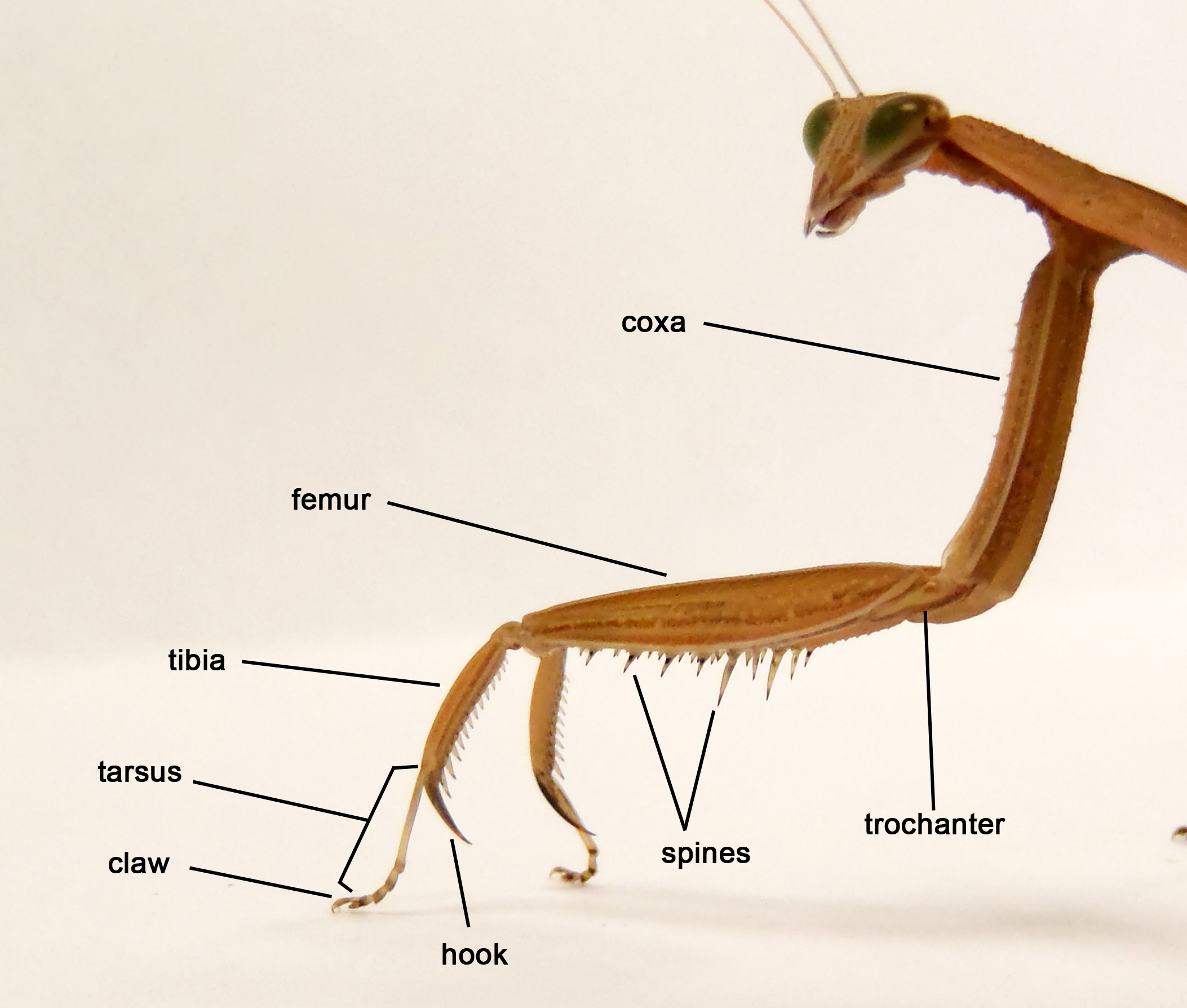 Figure 3a. The forelegs of the a typical praying mantis, also shows the rows of spines that will interlock when tibia is drawn upwards against the femur when capturing prey. (Photo: Maosheng) |
Description - Recognition
- It is to be noted that this is a general guideline to differentiate this particular group of mantid from other mantids. The nymphs or the adults of sister taxonomic groups can bear a high resemblance to each other.
Key to Identifying Tropidomantis (Oliveira, n.d.):
For the Tropidomantinae, a characteristic feature lies in their pronotum. The pronotum is about or a little more than twice its width. There is also a distinctive keel medially (Figure 5) on the dorsal side of both the prozone and metazone. (Svenson and Roy, 2011). |
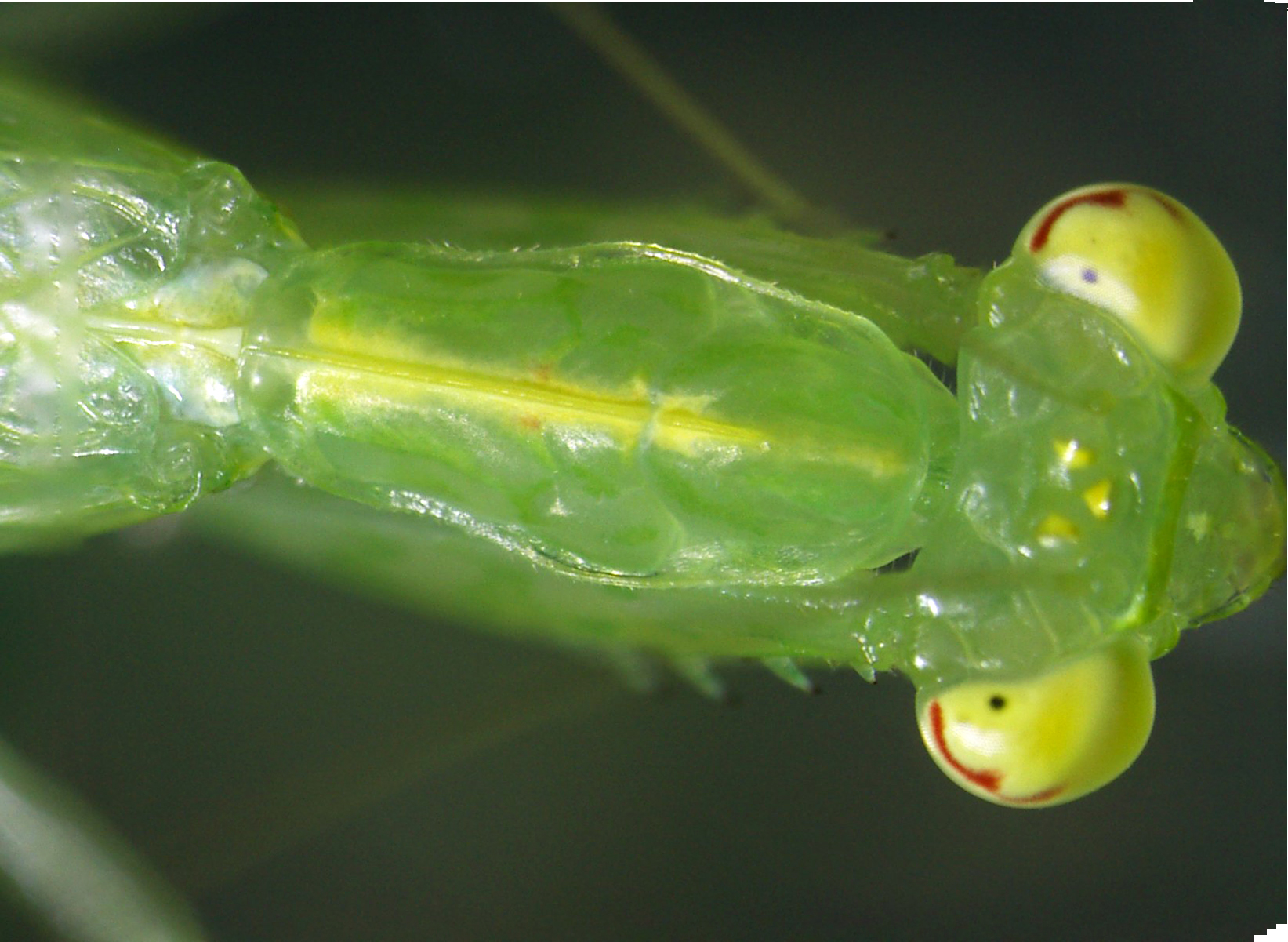 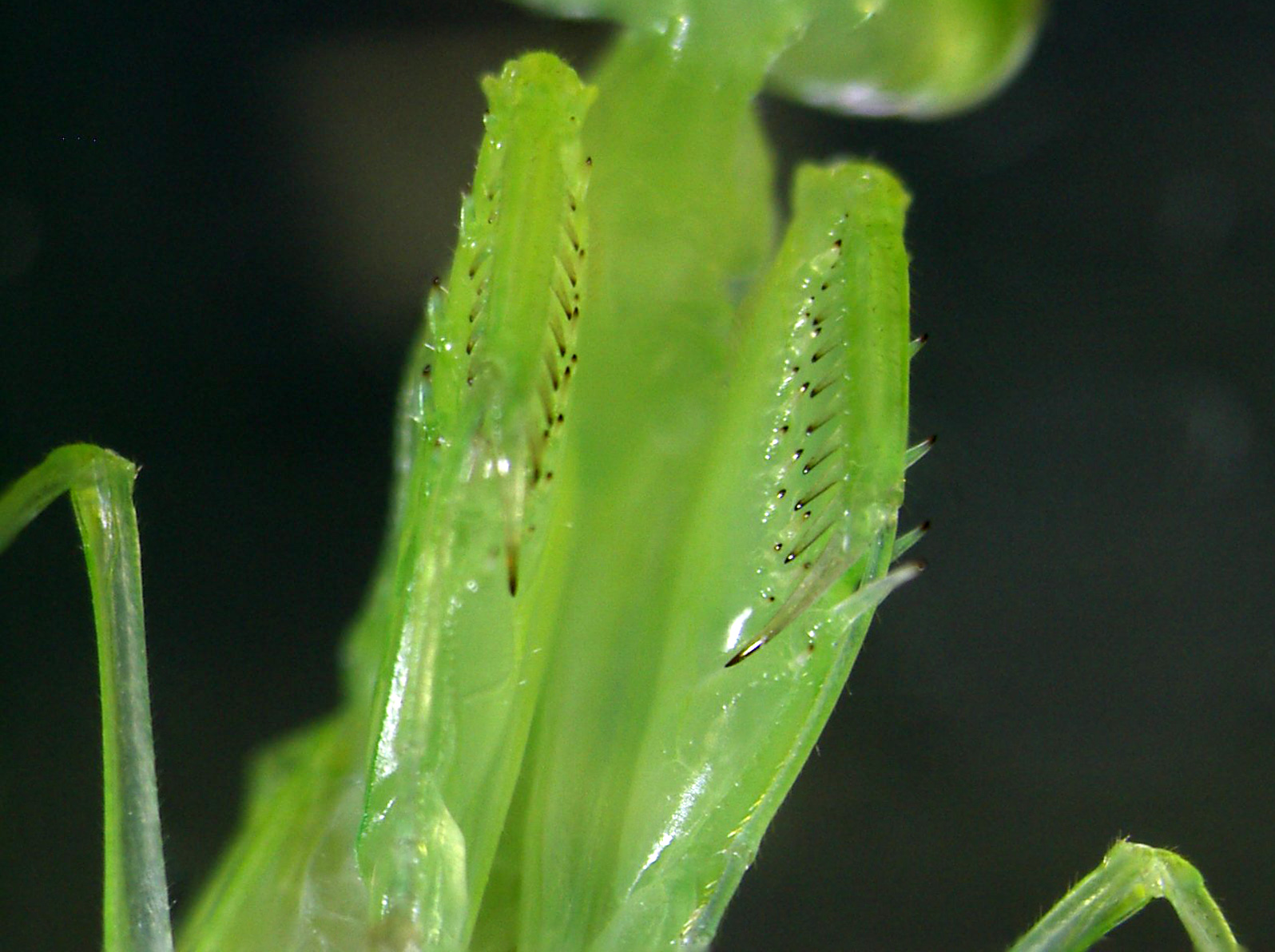 |
|
| Other than being green and shaped like your typical praying mantis.These mantids are easily recognizable, by having a blood-red streak markon their yellowish-eyes (Right). This distinguishes them from the Neomantis sp., especially for the nymphs. Early instars have a more faint mark. Another interesting feature is that they have a broken stripe pattern found on their fore femurs (Far Right). |
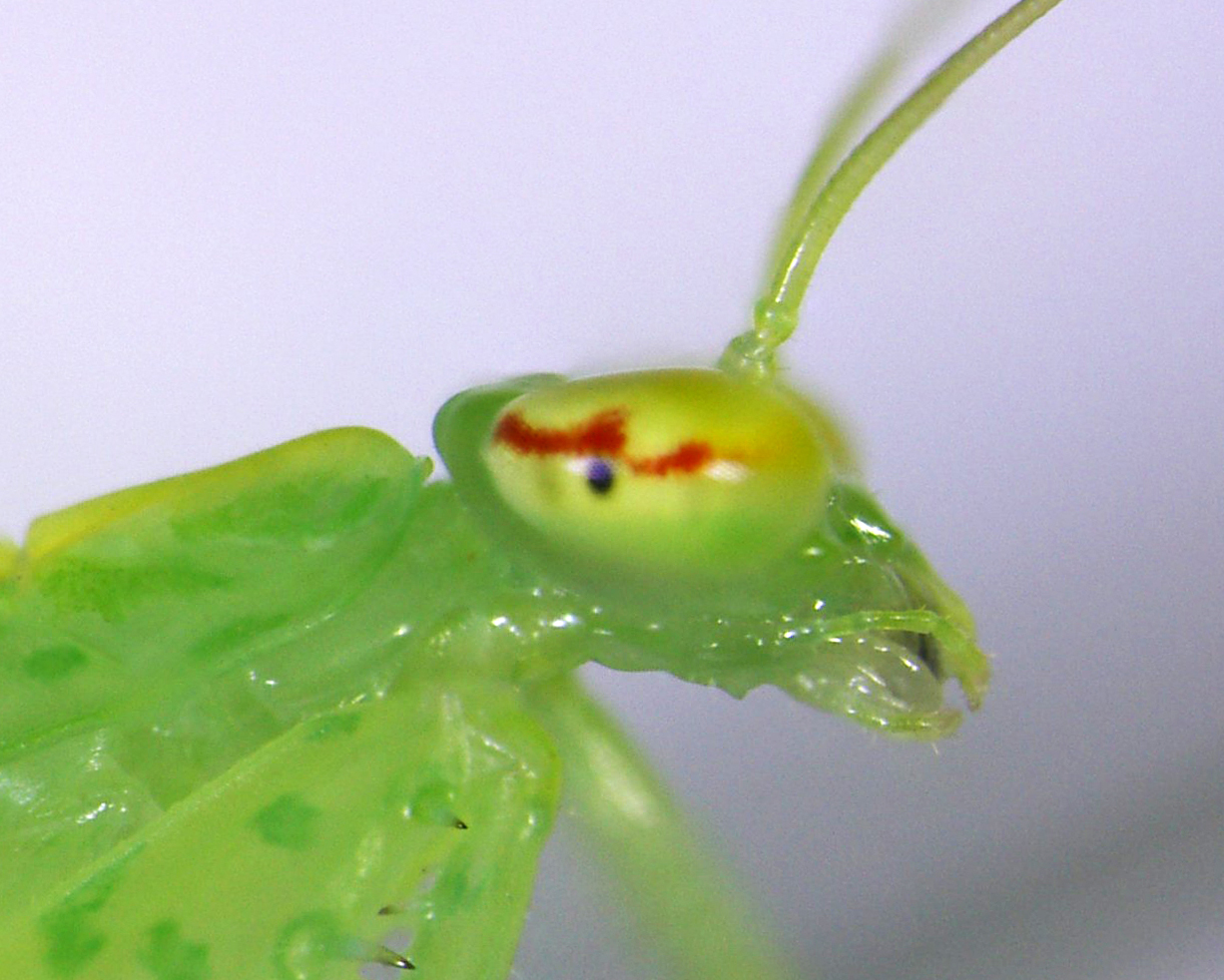 Figure 4. Note the blood-red streak across the eye. (Photo: Maosheng) |
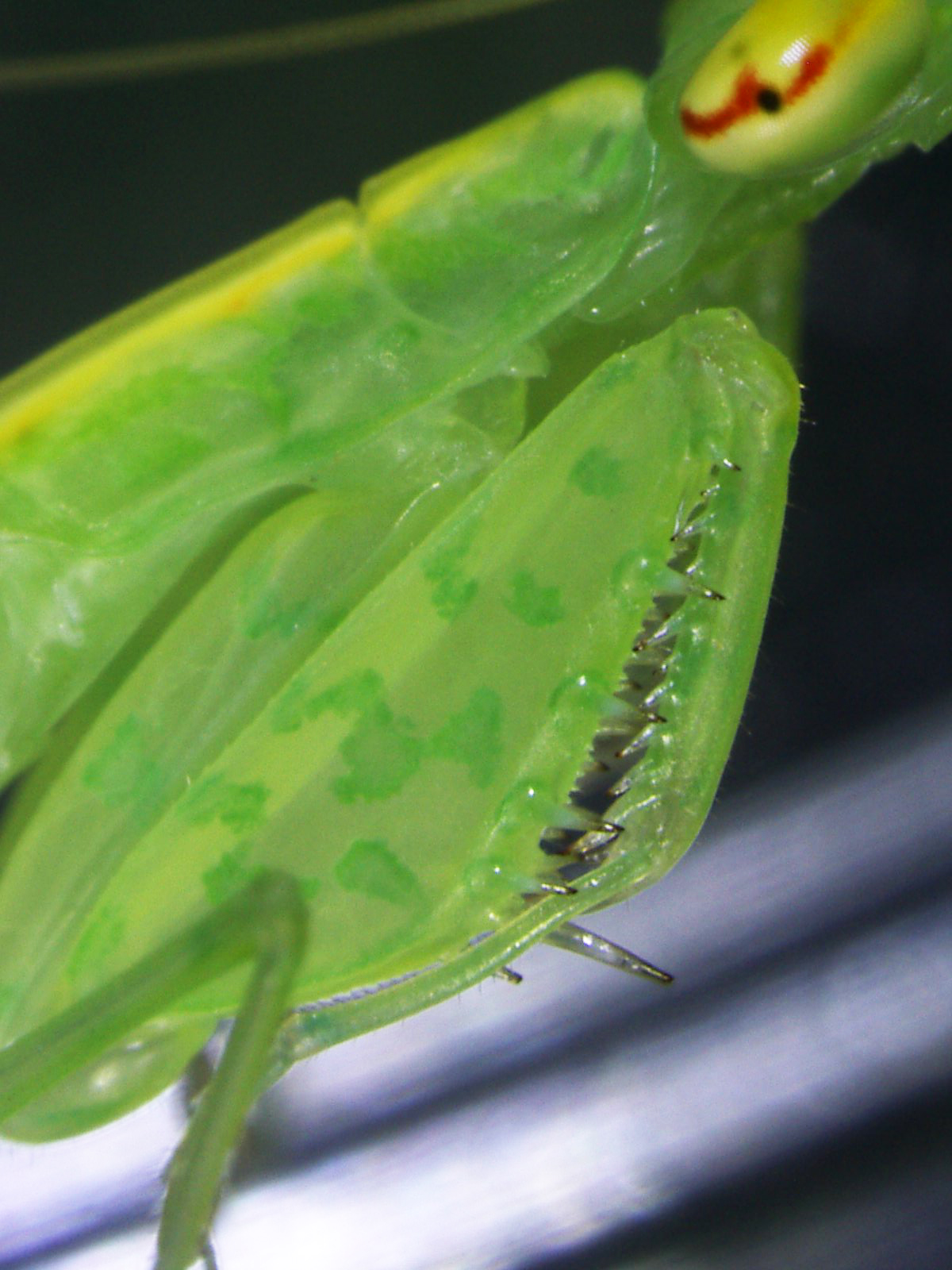 Figure 5.Distinctive keel on its pronotum (light shade of yellow) and broken stripes pattern on the fore femur. (Photo: Maosheng) |
| Another characteristic feature is the yellowish median line that runs from the posterior end of its head to its abdominal end. This median line is more prominent in during the nymph stages (Right). However, most of it becomes obscured by its wings when it reaches the adult stage (Figure 6b) |
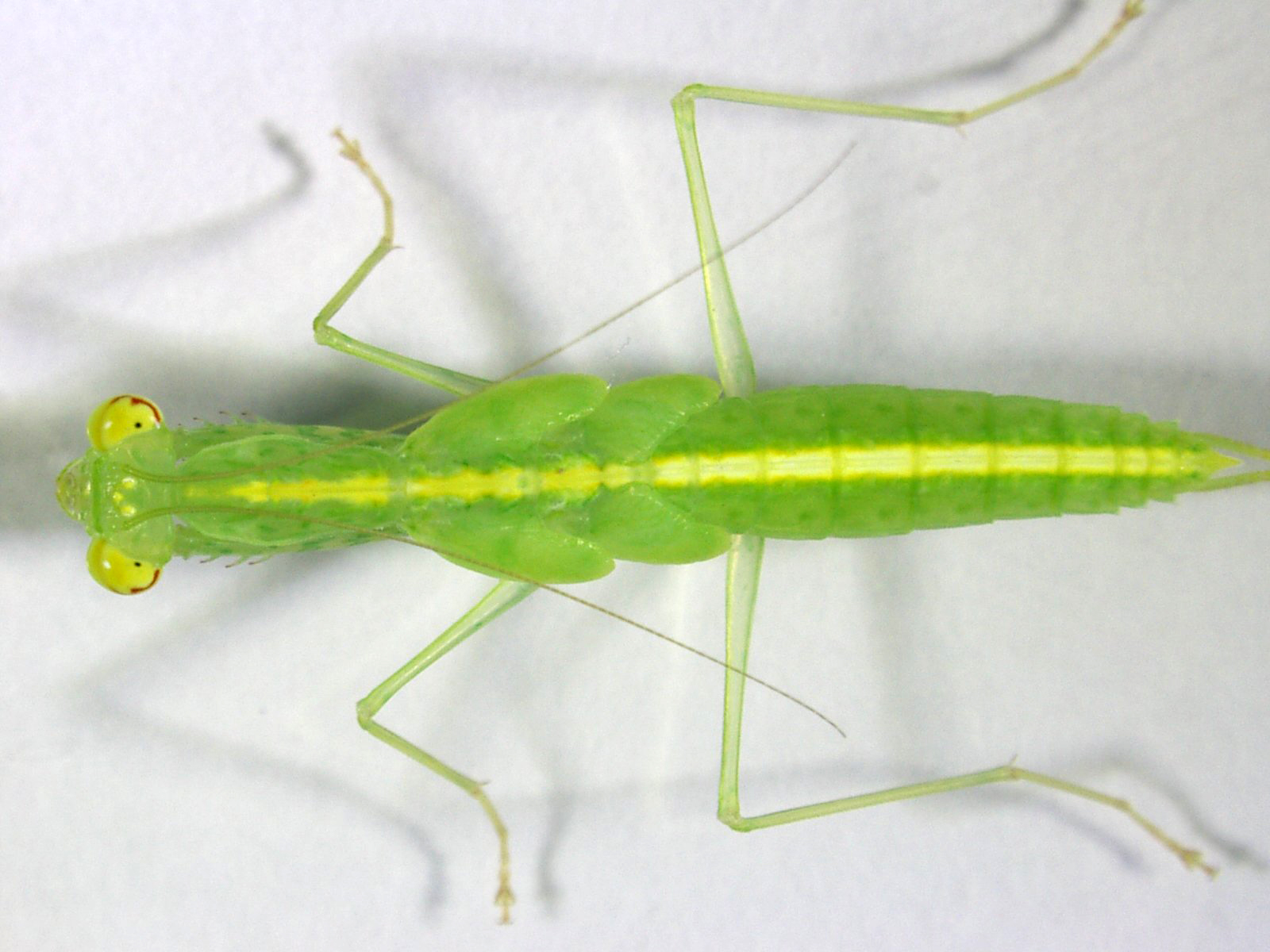 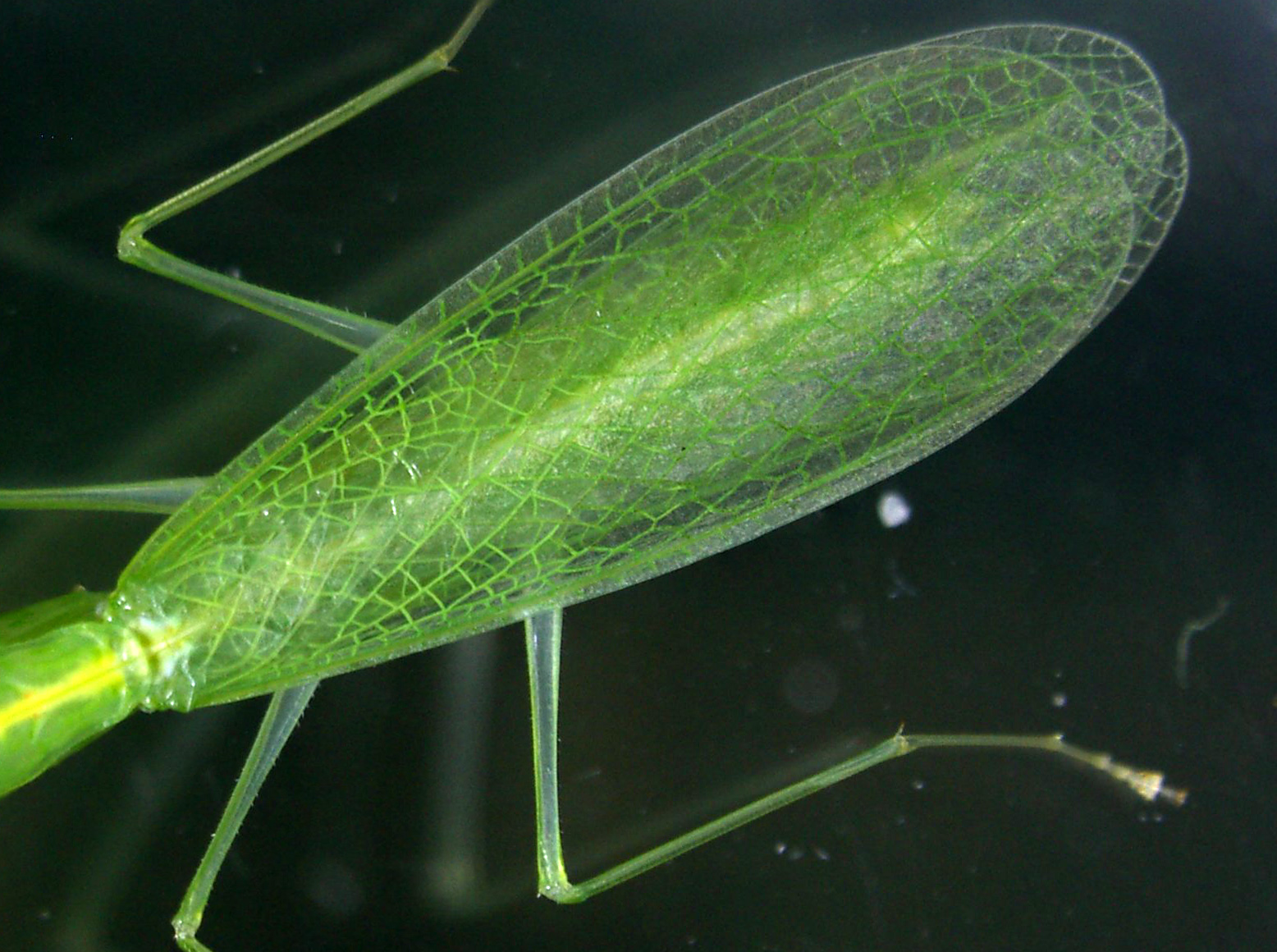 |
|
Biology - Ecology
Diet
| Like all mantids, the Tropodimantis tenera are strictly carnivorous. Compared to much larger mantids, such as the Creobater flower mantids able to feed on lizards, the Tropidomantis is only able to feed on insects that are smaller than itself. It spends most of its time standing still with its raptorial (forelegs) legs raised and folded, awaiting for a prey to pass by. Once a prey its spotted, it springs out it spiny raptorial legs and grasp them in place. It then proceeds to devour its prey alive. They generally get all their nutrients from the prey they ingest, including their intake of water (Loomis and Stone, 2007). Blind Spot However, mantids can suffer from a blind spot, with regards to detecting a potential prey, there is a need for some observable movement such as a flapping of wings. Otherwise, the mantid will not be stimulated in capturing it or may even pass by it. (Preston-Mafham, 1990). Feeding From the video (bottom right), it can be observed that its two rows of spines (Figure 3b) on both the femur and tibia of both forelegs are useful in holding the prey in place as it feeds on it, usually while the prey is still alive. From personal observations, if the prey breaks into two parts, it will feed on one half until it is done, then it feeds on the second half. |
 Figure 7. Adult (imago) Tropidomantis tenera will adopt a striking pose when it noticed a suitable prey. (Photo by: Václav Skoupý) Figure 7. Adult (imago) Tropidomantis tenera will adopt a striking pose when it noticed a suitable prey. (Photo by: Václav Skoupý) |
Video 1. Showing Tropidomantis tenera catching a fly, including slow-motion (15% of normal speed). |
Video 2. Showing Tropidomantis tenera feeding on a mealworm |
Defensive adaptations
Metamorphosis
| Mantids are hemimetabolous insects, or have an incomplete metamorphosis - egg, nymph and adult. The young are similar in appearance to the adults, the exception is that they have wing buds instead of fully developed wings such as in Figure 11. Mantids will generally go through 6 nymphal stages, before they reach adulthood, a process known as ecdysis or moulting (males tend to have fewer moults than females). It will moult by hanging upside down from a supporting element such as a leaf. Each time they moult, they will grow larger in size and their wing buds become more prominent. They also become less opaque (Balderson, 1991). This is seen (Right and Far Right) in the difference in the size of the wing bud between the mid and last instars (Photos: Maosheng) |
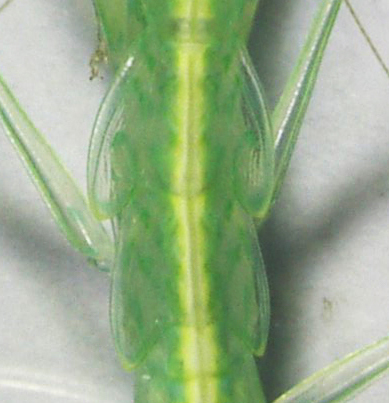 Figure 8. Mid-instar wing buds. |
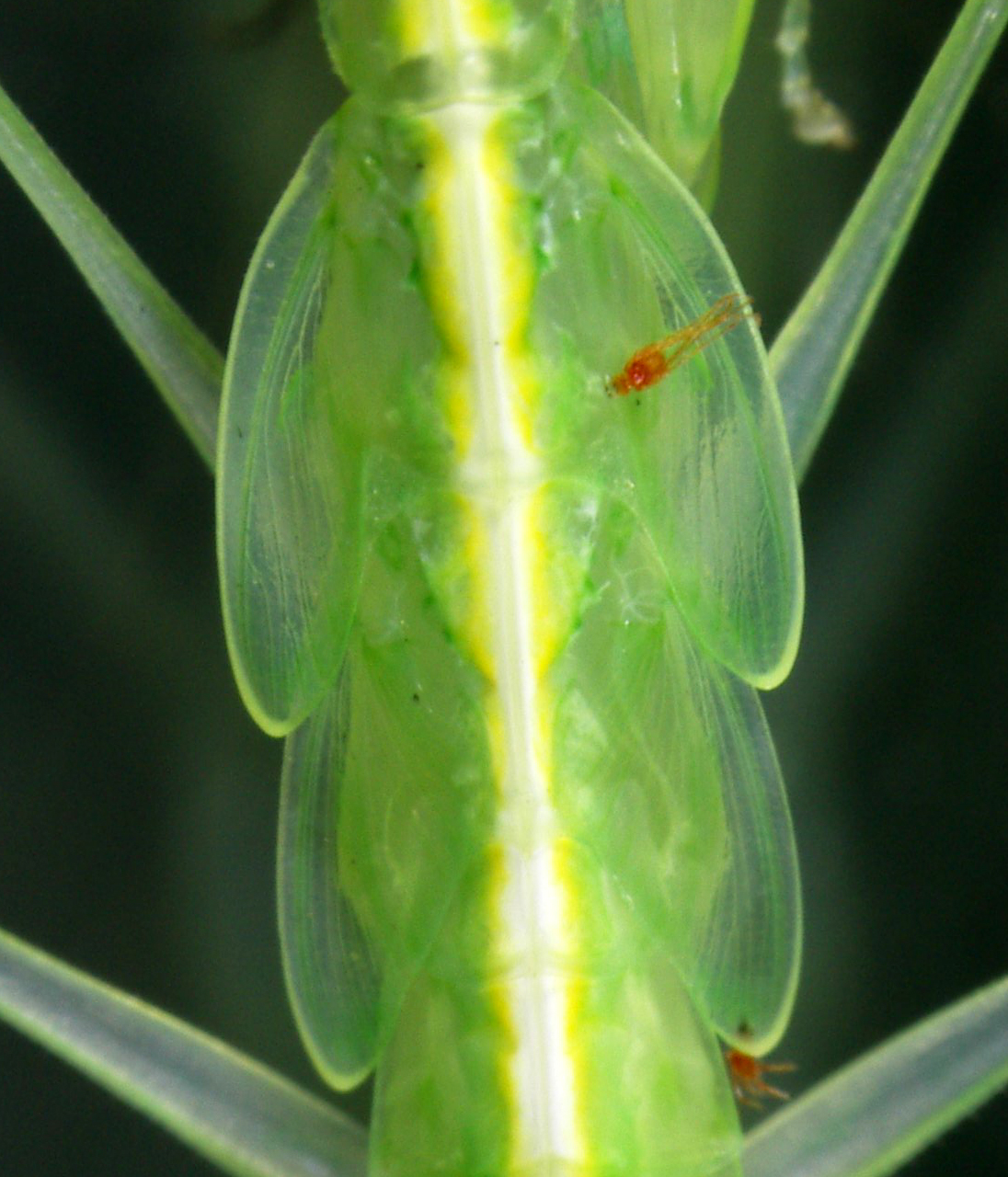 Figure 9. Late instar wing buds. |
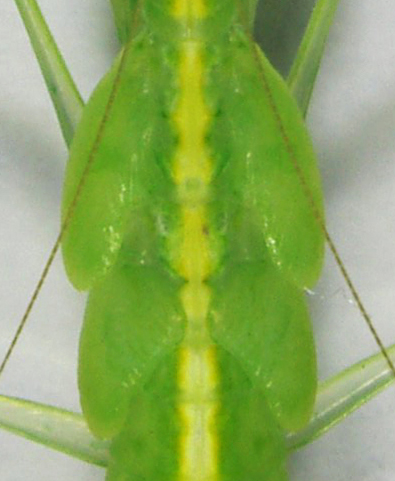 Figure 10. Final instar wing buds. |
||
Figure 11. Newly emerged adult of Tropidomantis tenera, on a petri dish. (Photo: Maosheng). |
Figure 12. The moult of Tropidomantis tenera.(Photo: Maosheng). |
||||
Differentiating Gender
| One is able to tell whether a mantid is a male or female is by looking at its abdomen. In addition, at the adult stage, males are generally smaller and slender, and females have a more 'swollen' abdomen. The males have 8 abdominal segments (ventral) while the females only have 6 segments. This can only be identified when the mantids are at least in their fifth instar (Zomeran, 2012). |
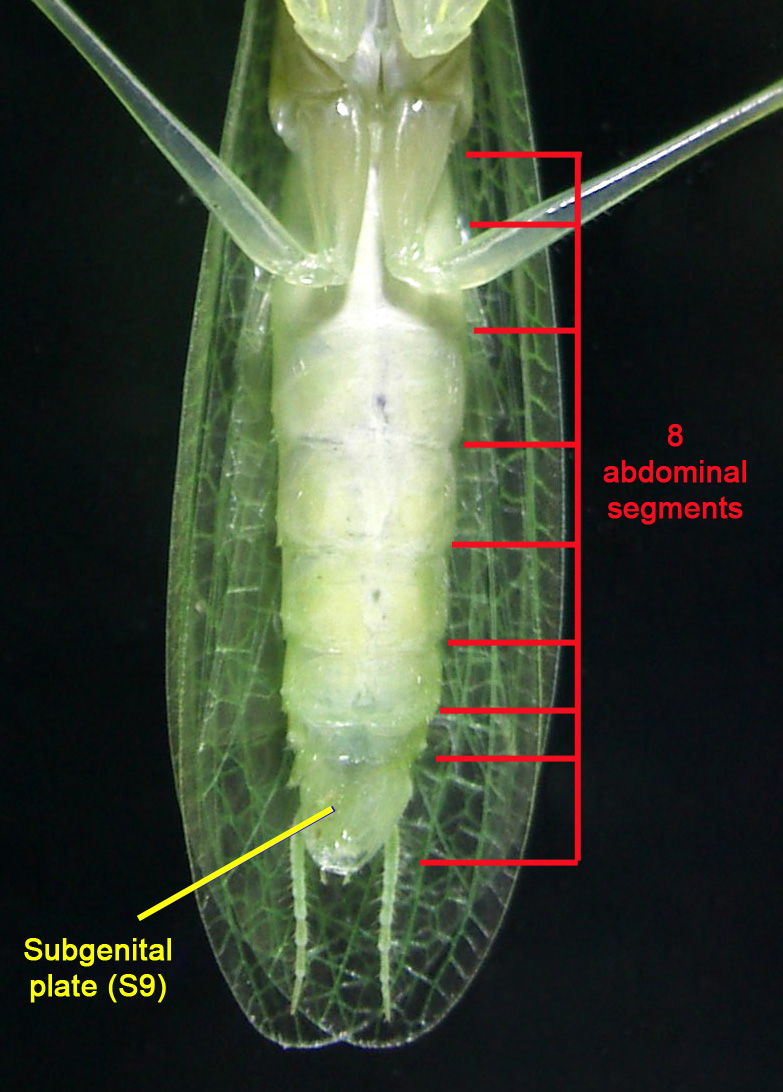 Figure 13. Abdomen of adult male Tropidomantis tenera. (Photo: Maosheng) |
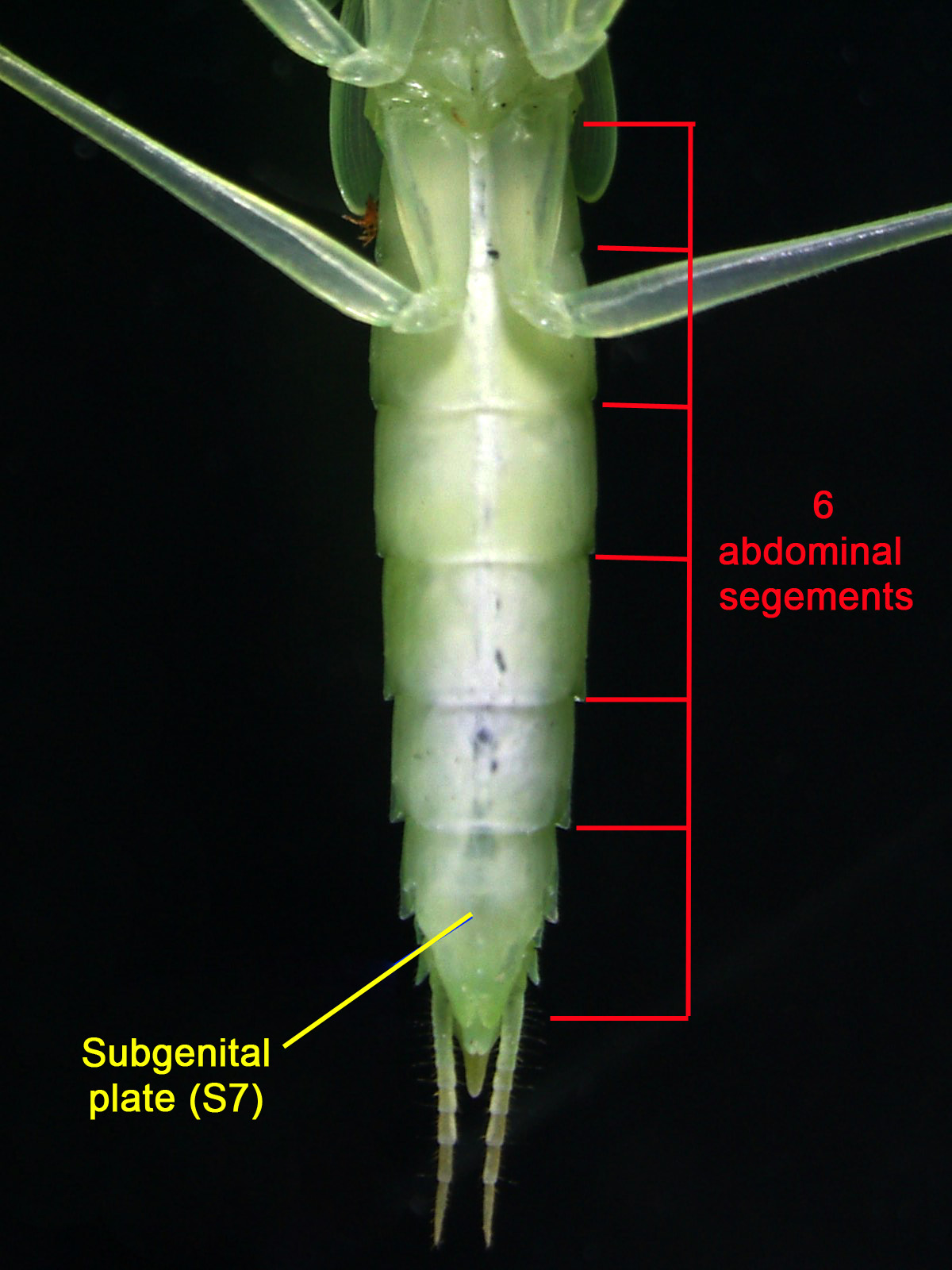 Figure 14. Abdomen of young female Tropidomantis tenera. (Photo: Maosheng) |
| Technically, males have 9 sternites (S), where S9 is the subgenital plate that is spoon-shaped and bears a pair of styles in addition to the pair of cerci. The subgenital S9 hides away the asymmetrical genitalia. As for females, they have 7 sternites, where S7 is the subgenital plate the encompasses the ovipositor. |
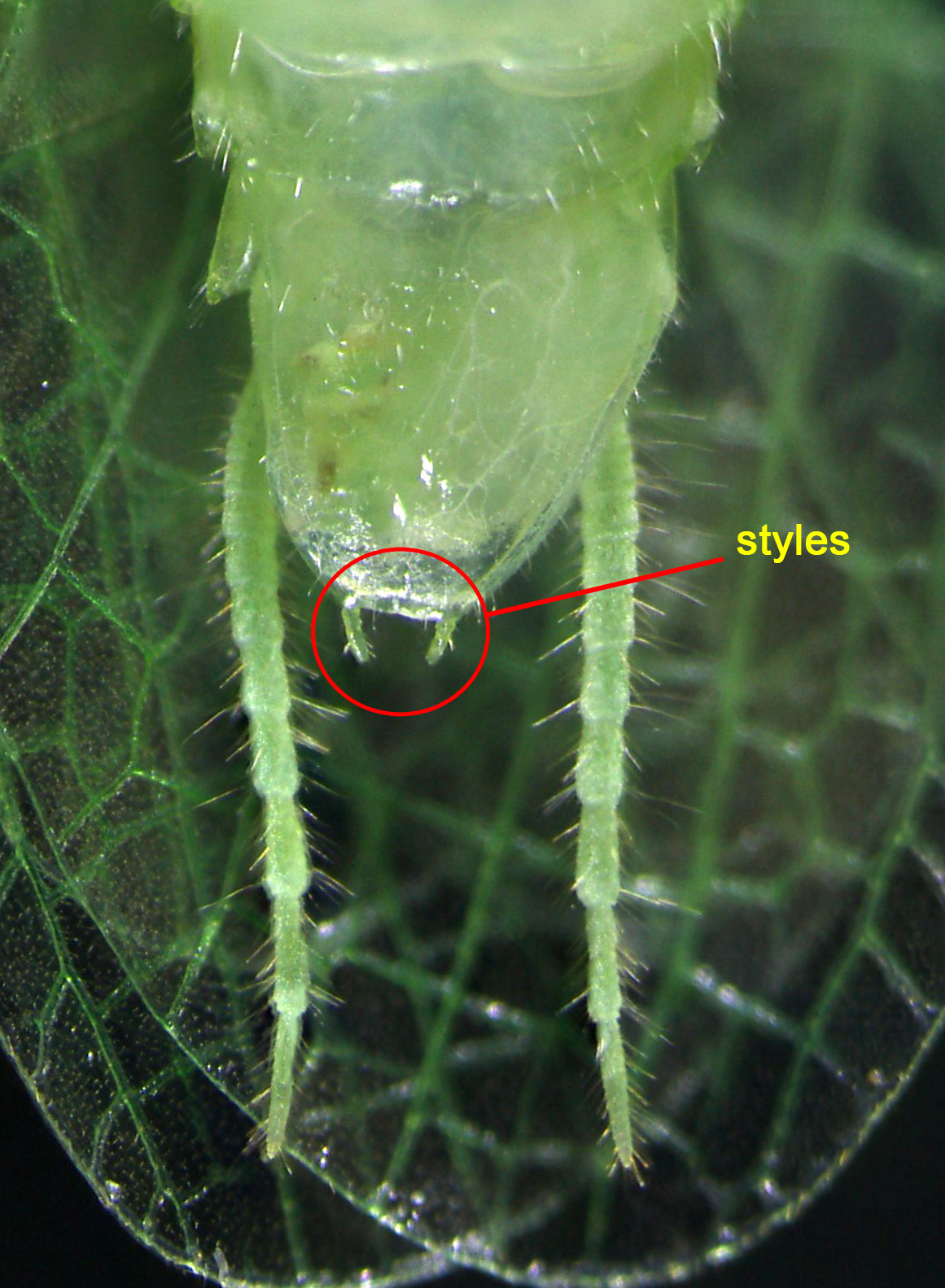 Figure 15. The urogenital plate of the male, bearing 2 styles. (Photo: Maosheng) |
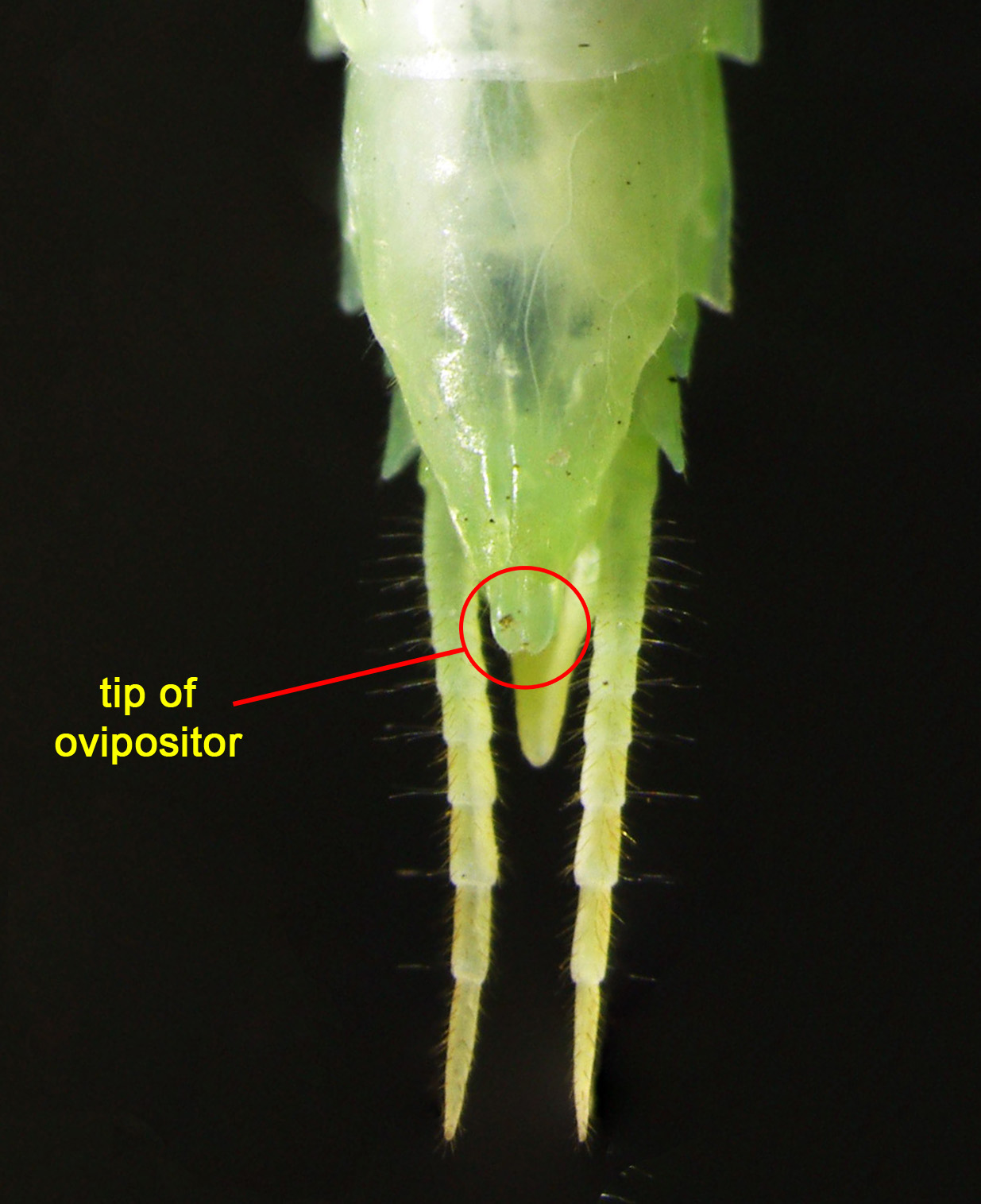 Figure 16. The urogenital plate of the female, which encompasses the ovipositor. (Photo: Maosheng) |
Courtship - Mating
| There is a general notion that female mantids will bite off the males' heads (or cannibalism of the male) during copulation and this leads to removing the inhibitory centres located in the brain (bitten off head), allowing a more vigorous transfer of sperm from the male (Liske and Davis, 1987). However, the above-mentioned is not entirely true, as it was based on the behaviour elicited during captivity, especially when there is a food shortage. As with other male insects, the male mantids would want to pass on his genes to as many offsprings as possible and that would be mating with more than one females. Thus, being eaten on his first mating will not be the option. The courtship and mating ritual of Tropidomantis tenera has yet to be fully studied, thus one is unable to conclude if the male will be cannibalised as there are mantids which have their heads positioned far from the female, minimizing the risk of being eaten during or after copulation (Preston-Mafham, 1990). |
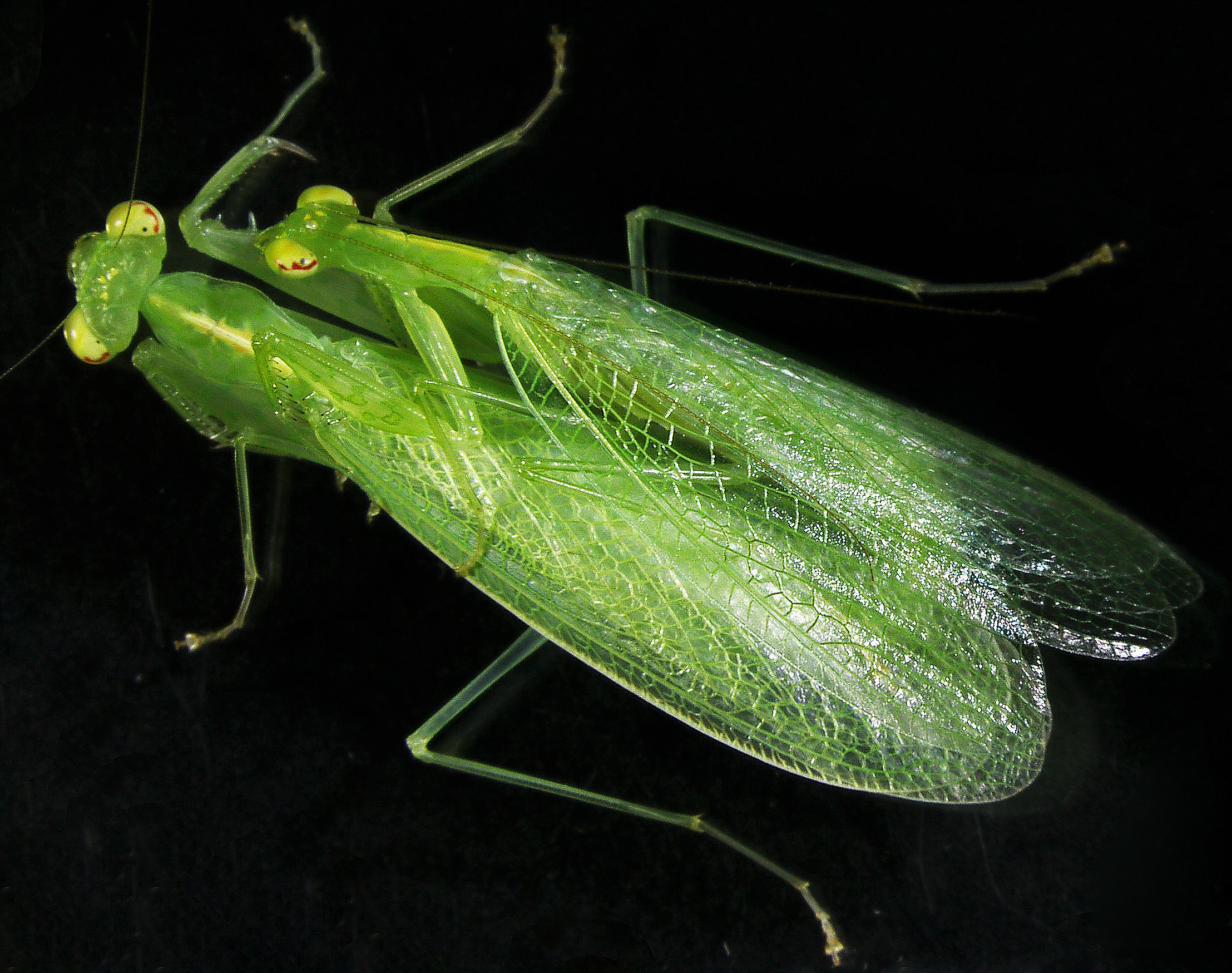 Figure 17. Pair of Tropidomantis tenera mating, the male is on top of the female. (Photo: Maosheng) |
| The video (right) show the ventral side of both Tropidomantis tenera (above) during their copulation or mating, which is under captivity conditions. It shows the pulsating movement of the female's abdomen, as she is receiving the sperm from her male counterpart. As well as, but less obvious (towards end of video), the slow pumping action of the male's abdomen as he transfers his sperm to the female. From personal observations, through the copulation period, the male clings onto the female even if she moves around, focusing on the transfer of his sperms to the female. |
Video 4. The ventral side of the copulating pair. |
Post Mating BehaviourFrom personal observations, after a period of copulation (under captivity), the male still clings onto the female. It is noted that the male is no longer having any genital contact with the female.This behaviour shown by the male is known to be mate guarding, whereby the male ensures his egg-fertilization success and to keep away potential rival competition (Alcock, 1994). This can last for a few hours. During this time, the male lies in close contact with the female, close enough for her raptorial legs to reach him. However, he remains undeterred. The video (below) show the post copulation behaviour of the male, staying close with female that he evens grips onto the female right raptorial leg. As the female grooms herself, it shows that she seems to groom the male's raptorial tibia or might just be nibbling until he lets her go. Still, this does not cause the male to leave the female's side. |
Figure 19. The male is only just clinging onto the female, a post-copulation behaviour. (Photo: Maosheng) |
Video 5. The male "riding" on the back of the female, mate-guarding her. |
Figure 20. The female feeds on a mealworm instead of her male partner who is mate guarding her. |
EggsAfter mating, the female will lay an egg-case, called ootheca (right). The brown foam-like texture is the case itself, to protect the eggs of Tropidomantis tenera within until they are ready to hatch. |
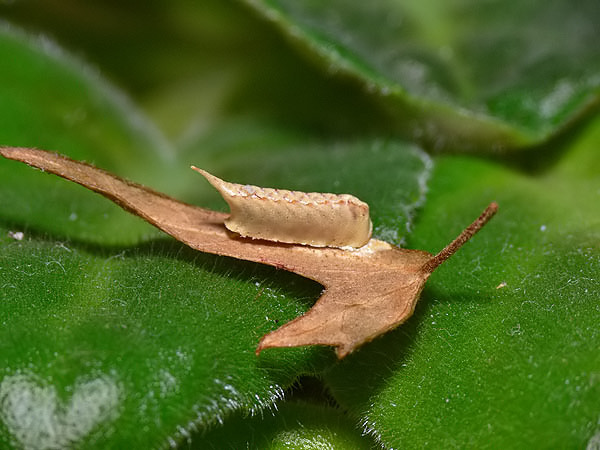 Figure 21. The ootheca (egg-case) of the Tropidomantis tenera. (Photo: Piotr Hołoweńko) |
HatchingWhen it is time for the nymphs to emerge from the ootheca. They would go through an additional stage called - pronymph. It is where they appear to be vermiform. After which, they would under a rapid development and moult into their first instar. It is where they are the miniature version of the adults (right). They are not easy to be spotted due to their near-like transparent bodies, virtually making them invisible. Furthermore, they are almost completely different in colour to the adults and later instars who are green in colour. Video 6. The first instar of the Tropidomantis tenera, its body is nearly transparent that one is able to see the movement of its innards. |
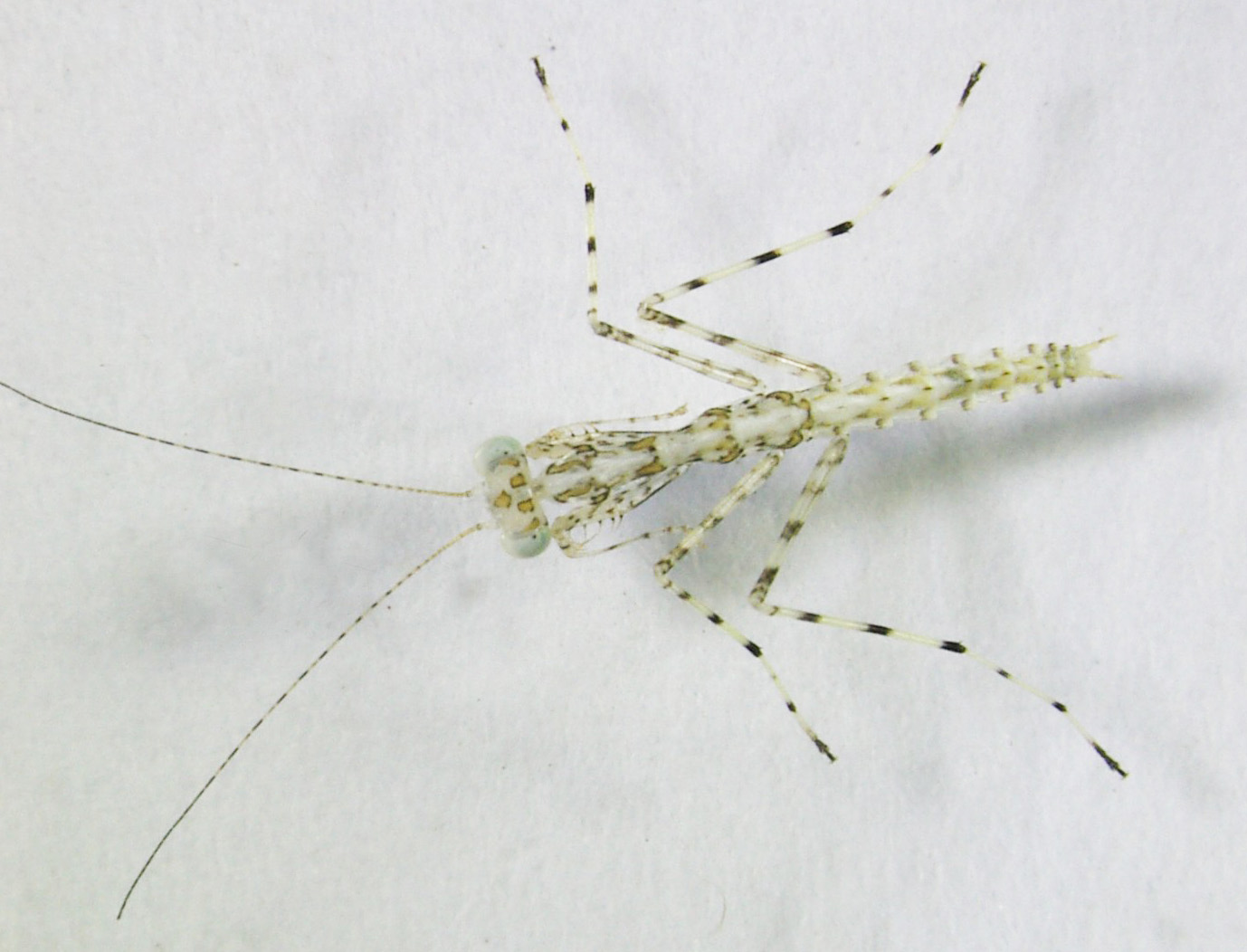 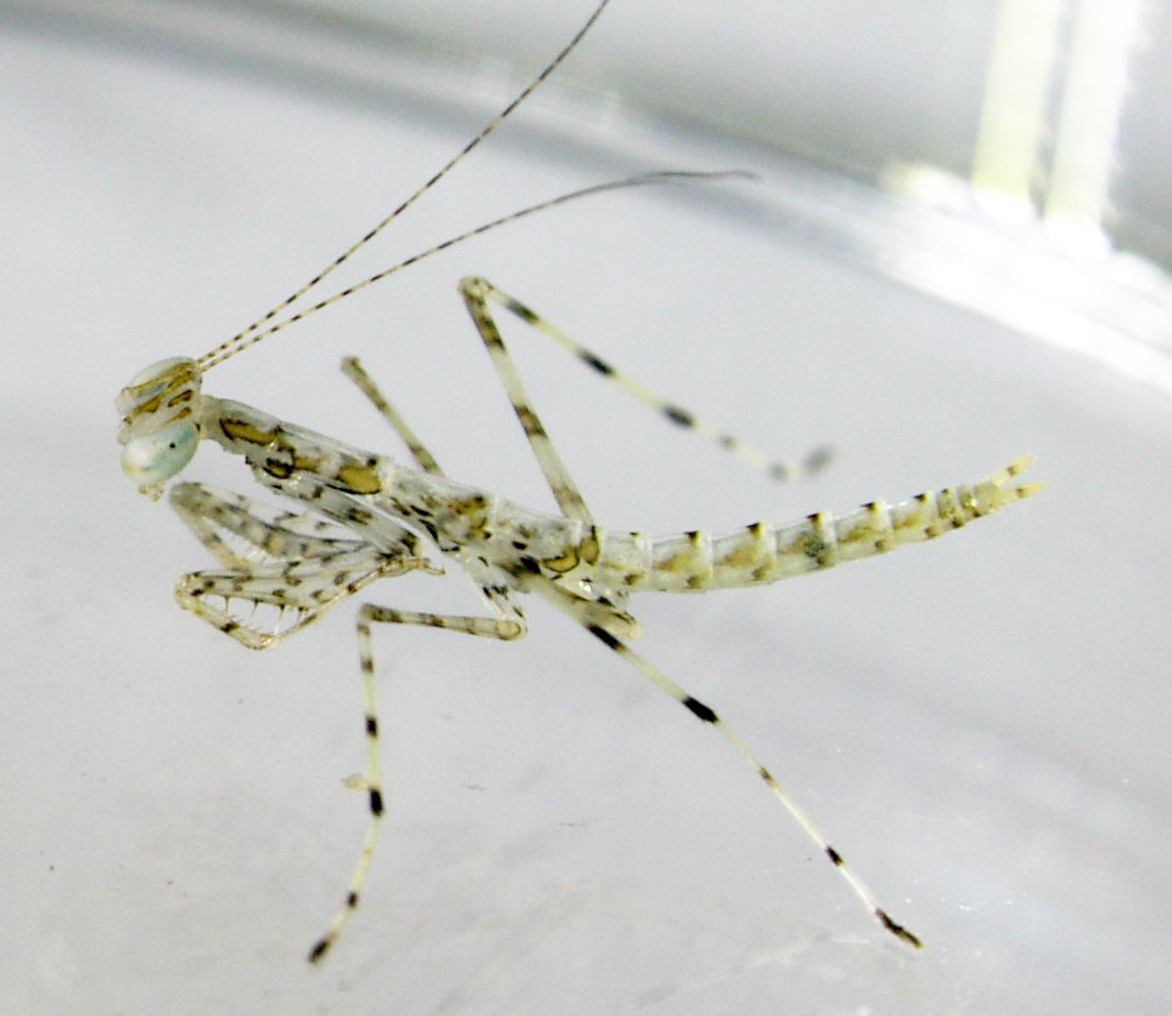 Figure 22 & 23. - The first instar of the Tropidomantis tenera. (Photo: Maosheng) |
Economic Importance
Mantids or Mantises generally may seem be able to be used as biological control agents, such as to clear pests. However, they are low in numbers in nature, that they provide little economic significance. This is due to their natural behaviour, of being are generally widely dispersed and solitary, except during periods for mating.
Furthermore, these mantids do not prey on specific insects, so they can devour both pests and beneficial insects.
Taxonomy
Taxonomy ID: 627780
Taxonomic Coverage: Animalia - Arthropoda - Insecta - Mantodea
Specimen: Holotype (female), located in NHRS Stockholm [link]
Taxa Hierarchy
| Lineage: › Eukaryota ---› Opisthokonta -------› Metazoa ----------› Eumetazoa -------------› Bilateria ----------------› Coelomata -------------------› Protostomia ----------------------› Ecdysozoa -------------------------› Panarthropoda ----------------------------› Arthropoda -------------------------------› Mandibulata -----------------------------------› Pancrustacea --------------------------------------› Hexapoda -----------------------------------------› Insecta ---------------------------------------------› Dicondylia -------------------------------------------------› Pterygota -----------------------------------------------------› Neoptera --------------------------------------------------------› Orthopteroidea ------------------------------------------------------------› Dictyoptera ----------------------------------------------------------------› Mantodea --------------------------------------------------------------------› Iridopterygidae ------------------------------------------------------------------------› Tropidomantinae -----------------------------------------------------------------------------› Tropidomantis |
Synonym: Tropidomantis perla (Kirby, 1904) [2] Related species: Under Tropidomantis Stål, 1877
Related taxons:
|
Distribution
| Locality This is a species of mantis that is generally found in Tropical East Asia region - Thailand, Malaysia, Sumatra, Java, Flores, Sumba, Sulawesi, Borneo and Philippines [Link]. It is also found in Singapore, such as in Kent Ridge and Punggol (End). Habitat They are mostly found to be on shrubs, and on occasionally, to be on tree trunks. |
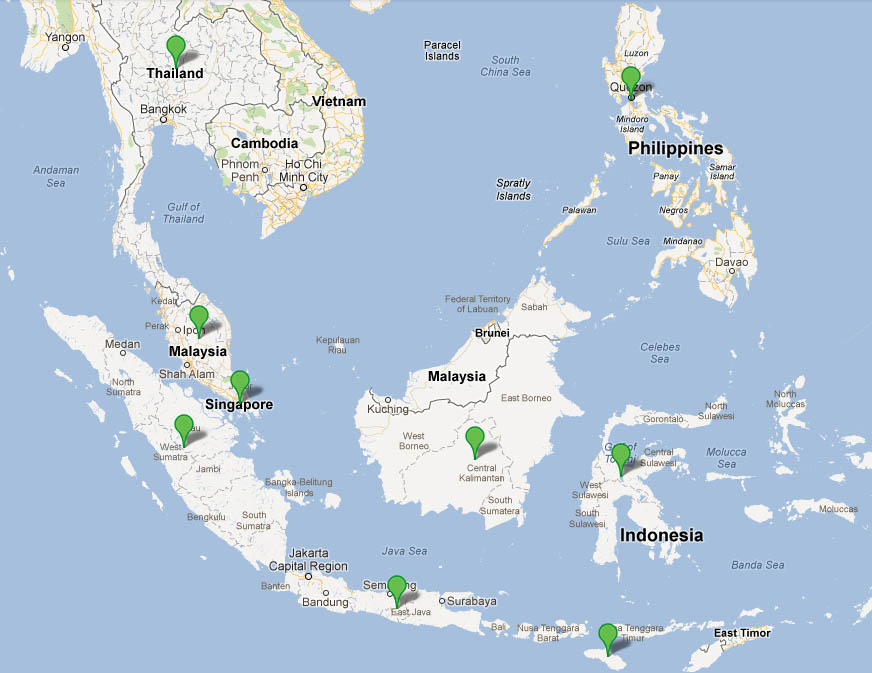 |
Evolution of a Predator
| Mantids are commonly known to be ambush their prey, lying in wait until a potential prey arrives. However, not all mantids are ambush predators. Svenson and Whiting (2004) have tested the monophyly of different taxa groups under Mantodea, to determine the phylogenetic relationships among them. Their results show that the taxon group - Iridopterygidae is paraphyletic, which Tropidomantis tenera is nested in. The phylogenetic tree (Figure 20) is produced to determine the hunting strategy used by ancestral mantids, which has shown that the common ancestor is very likely a generalist predator (Svenson and Whiting, 2004). Tropidomantis tenera, falling under Tropidomantinae (Iriodopterygidae) could either be a cursorial or generalist predator. However, further studies involving molecular techniques are needed to confirm it. |
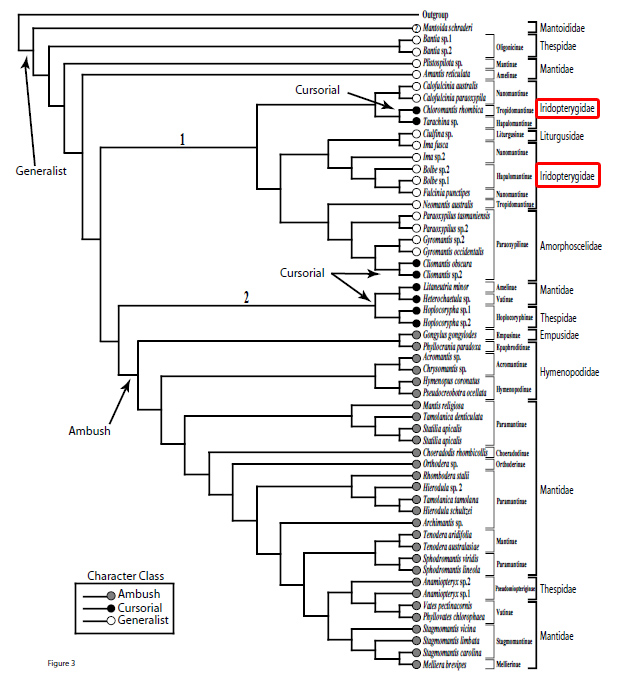 Figure 22. Phylogeny show that class of the common ancestor, and the class of different mantids. As highlighted, it shows the possibility of the class of Tropidomantis tenera. (Figure: Permission Pending from Svenson and Whiting 2004, extracted from here) |
Pets
Mantids are able to be kept as pets, though larger species are tend to be kept in insect hobby.
They can be kept in a small tank, with some twigs and leaves and a small dish of water (Loomis and Stone, 2007). A simple guideline to keeping potential mantids is found here.
They are usually kept individually, each to its own tank, as they can be cannibalistic towards each other.
A common behaviour seen is that mantids will groom themselves, as if they are nibbling on their body parts like their antennae and legs.
| Video 6. Tropidomantis tenera grooming itself. |
Video 7. Showing Tropidomantis tenera being fed with a fly (Diptera). |
External Links
1) Phylogeny of the Mantids, using data from 63 taxa, including those of Iridopterygina
(http://whitinglab.byu.edu/Research/Phylogenies/Mantodea/Phylogeny.aspx)
2) Project Mantodea: Systematics and Evolution
(http://mantodearesearch.com/projects/)
3) Photography of Mantids in Malaysia, including Tropidomantis
(http://orionmystery.blogspot.sg/2012/03/mantis.html)
4) Mantodea Systematic
(http://mantids.de/3.html)
5) Tree of Life: web project - Tropidomantis.
(http://tolweb.org/Tropidomantis_%28Tropidomantis%29/53596)
6) National Center for Biotechnology Information (NCBI) - Tropidomantis tenera
(http://www.ncbi.nlm.nih.gov/Taxonomy/Browser/wwwtax.cgi?lvl=0&id=627780)
7) Mantodea Species File - Tropidomantis tenera
(http://mantodea.speciesfile.org/Common/basic/Taxa.aspx?TaxonNameID=1263)
8) Dirk Weickmann - Mantises
http://www.dirkweickmann.de/tiere/fangschrecken_en.php
References:
Alcock, J. (1994). Postinsemination associations between males and females in Insects: The Mate Guarding Hypothesis. Annual Review of Entomology. 39: 1 - 21.
Balderson, J. (1991). Mantodea. Naumann, I.D., P.B. Carne, J.F. Lawrence, E.S. Nielsen, J.P. Spradbery, R.W. Taylor, M.J. Whitten, M.J. Littlejohn (eds.) The Insects of Australia, 2nd Edition. Pp. 348 - 356.
Chinery, M. (1973). Dictyoptera: Cockroaches and Mantises. A Field Guide to the Insects of Britain and Northern Europe. Pp. 93 - 98.
Liske, E. & W.J. Davis (1987). Courtship and mating behaviour of the Chinese praying mantis, Tenodera aridifolia sinensis. Animal Behaviour. 35: 1524 - 37.
Loomis, J.M. and H. Stone (2007, Apr). Praying Mantis.
http://extension.oregonstate.edu/catalog/pdf/ec/ec1605.pdf (Accessed 28 Oct.2012).
Oliveira, D. (n.d). Key to Praying Mantids. Earthlife Web.
http://www.earthlife.net/insects/mant-key.html (Accessed 20 Sep.2012).
Preston-Mafham, K. (1990). Food and Feeding. Grasshoppers and Mantids of the World. Pp. 86 - 94.
Svenson, G. J and R. Roy (2011). Taxonomic treatment of the endemic Malagasy praying mantis genus Hyalomantis Giglio-tos, 1915, with a new synonymy and the description of three new species (Mantodea, Iridopterygidae, Tropidomantinae). Zootaxa. 2777: Pp 1–24.
Svenson, G. J. & M. F., Whiting (2004, Jul). Phylogeny of Mantodea based on Molecular data: Evolution of a charismatic predator. Systematic Biology, 29:3, Pp. 359 -370.
Svenson, G. J. & M. F., Whiting (2004). Hunting Strategy. Whiting Lab of Insect Phylogenetics.
http://whitinglab.byu.edu/Research/Phylogenies/Mantodea/HuntingStrategy.aspx (Accessed 28 Oct.2012)
Zomeran, L.V. (2012). Sexing. Keeping insects.
http://www.keepinginsects.com/praying-mantis/distinguishing-males-and-females/ (Accessed 29 Oct.2012)
Discussion & Comments:
If you have any sightings on where it was seen, or to contribute to the page, feel free to leave a message below.
comments powered by Disqus